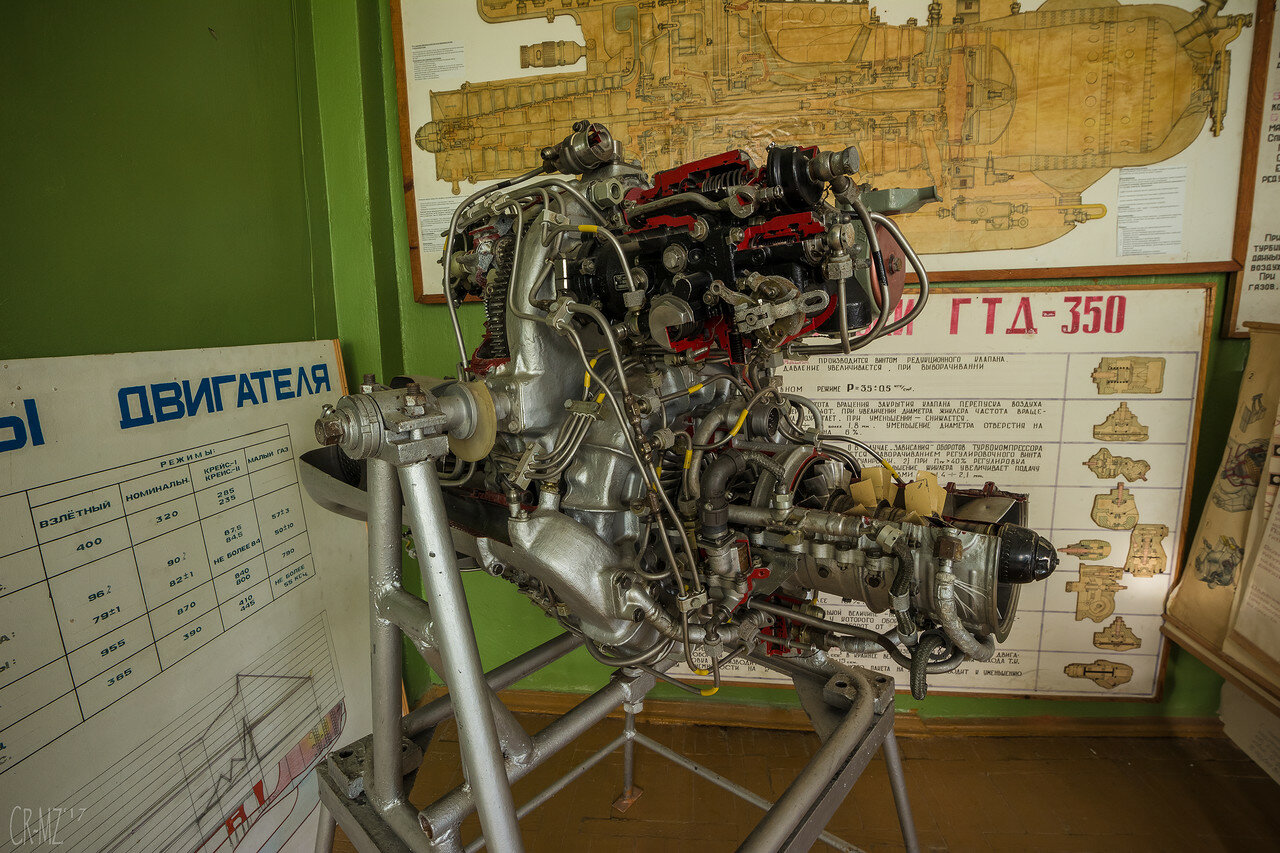How can a cadet learn combat skills most quickly and well? How can a mechanic understand the mechanics of a winged vehicle? These people tend to be more visual and kinesthetic, which means that for them the construction of training materials should be based on clarity, practicality, and schematism.
Leaving the facility we were firmly convinced that if we had stayed there at least one full day we would have learned the basics of aircraft engineering - so accessible and understandable was the material explained on the layouts, stands, and described in the library literature. The aviator's profession is very responsible, so he must be a kind of "Swiss army knife" ready for anything. It is a pity that such a school has been abandoned.
After wandering around the grounds, we poked around in several different buildings until we found the right one.
This is a moldy spider ._.
Finally, we are there. A little acrobatics and we are inside. The first room opened to our eyes, entirely devoted to the structure of the helicopter MI-2.
The helicopter interior.
Those stands show in detail the structure of important systems of this combat vehicle.
And not just drawings, but also full-scale details bolted to the stands.
Nice!
For many parts with complex structures, there are cut-away models.
Cadets need to know the materials used to make their aircraft.
Be able to reproduce their internal structure.
Be faithful to their homeland.
Familiar to many engineering students interiors.
You also need to know the base of humanitarian knowledge. Without them, there is no place in society.
Someone's major was airfield maintenance.
And aircraft maintenance.
Ringing slogans are present in almost every classroom.
Literature.
Comrade, how is your coursework?
Every self-respecting educational institution has its own library.
London is the capital of Great Britain.
Aerodynamics, kinetics, mechanics, cartography, electrical engineering, strength of materials, radar. You have to know physics!
I wish every modern school had posters like that!
Do you know how a gas turbine engine works?
Giant.
The corridors of the school are simply fascinating with the abundance and colorfulness of their posters and displays.
One of the types of anti-icing systems (and one of the most reliable) is the radioisotope sensor RIO-3.
The principle of operation of such a detector is based on attenuation of beta-radiation of isotopes Sr-90/Y-90 by a layer of ice, growing on the sensitive surface of the detector pin in flight.
Stained glass windows.
Behind the windows of these booths are many different aviation instruments for navigation, performance measurement and flight control.
In this room, too, you can learn in detail about the construction of engines and other components of airplanes and helicopters.
Small components of machinery.
Still spinning.
Schematic and layout.
The engine in section.Understandable.
Mockups made in Poland.
Cool and unforgettable!
A unique object of its kind, well preserved to this day. Unfortunately, time will not spare it, so we must save it at least in photos. But I want to believe that not everything is still forgotten and abandoned: it's just that flight cadets are now being trained in a better school.
Until we meet again!































































No comments:
Post a Comment